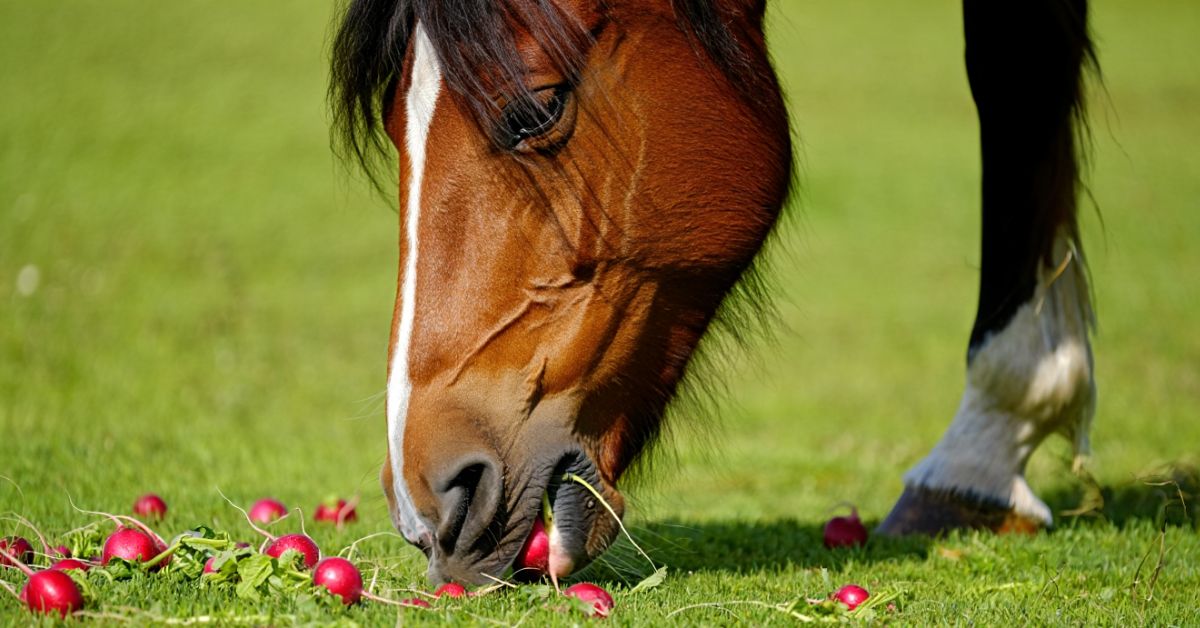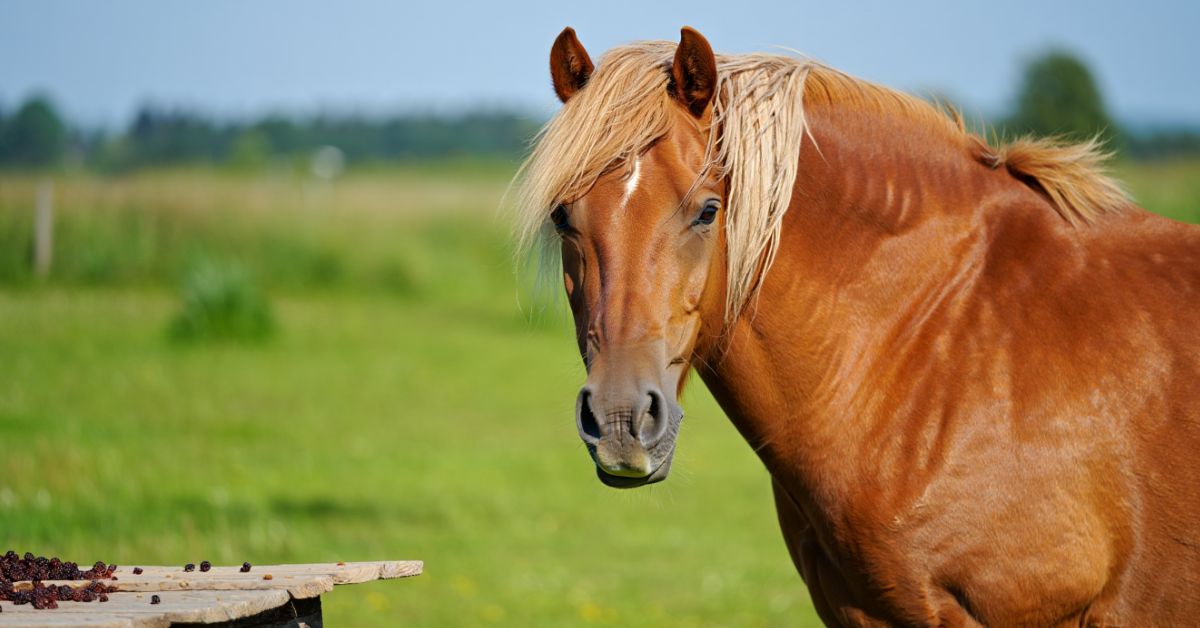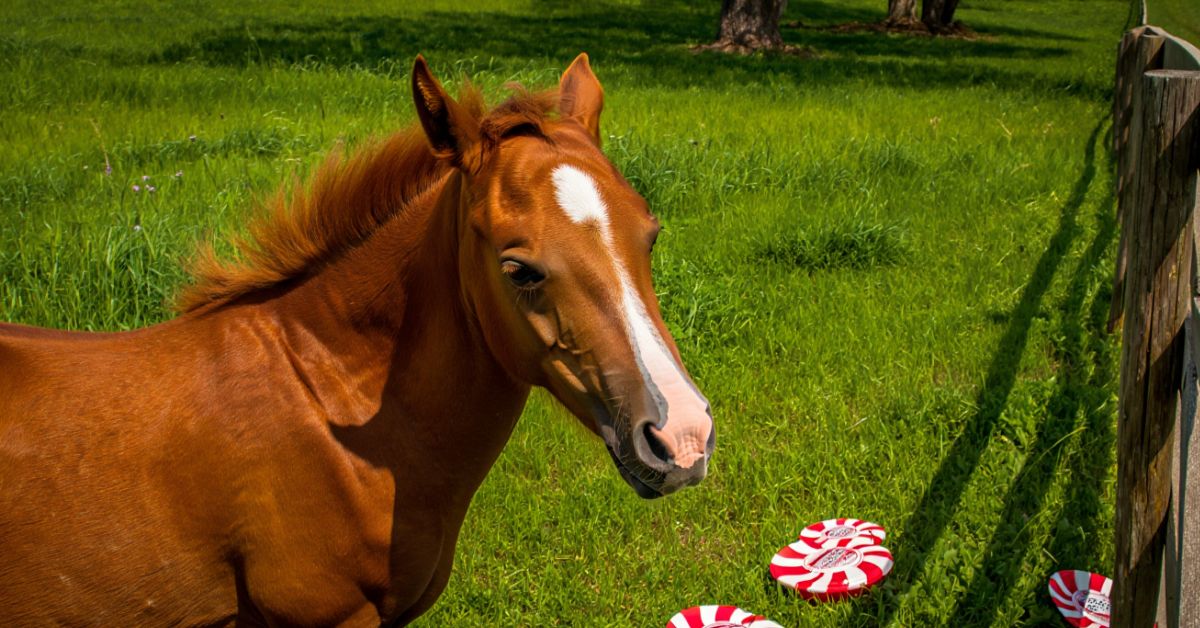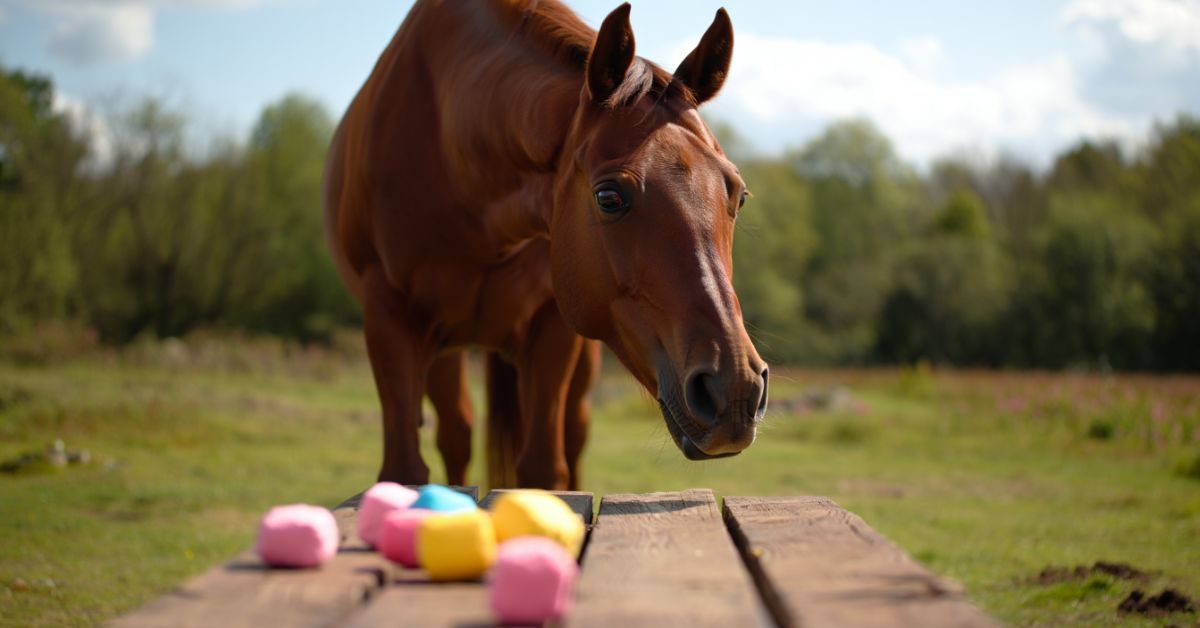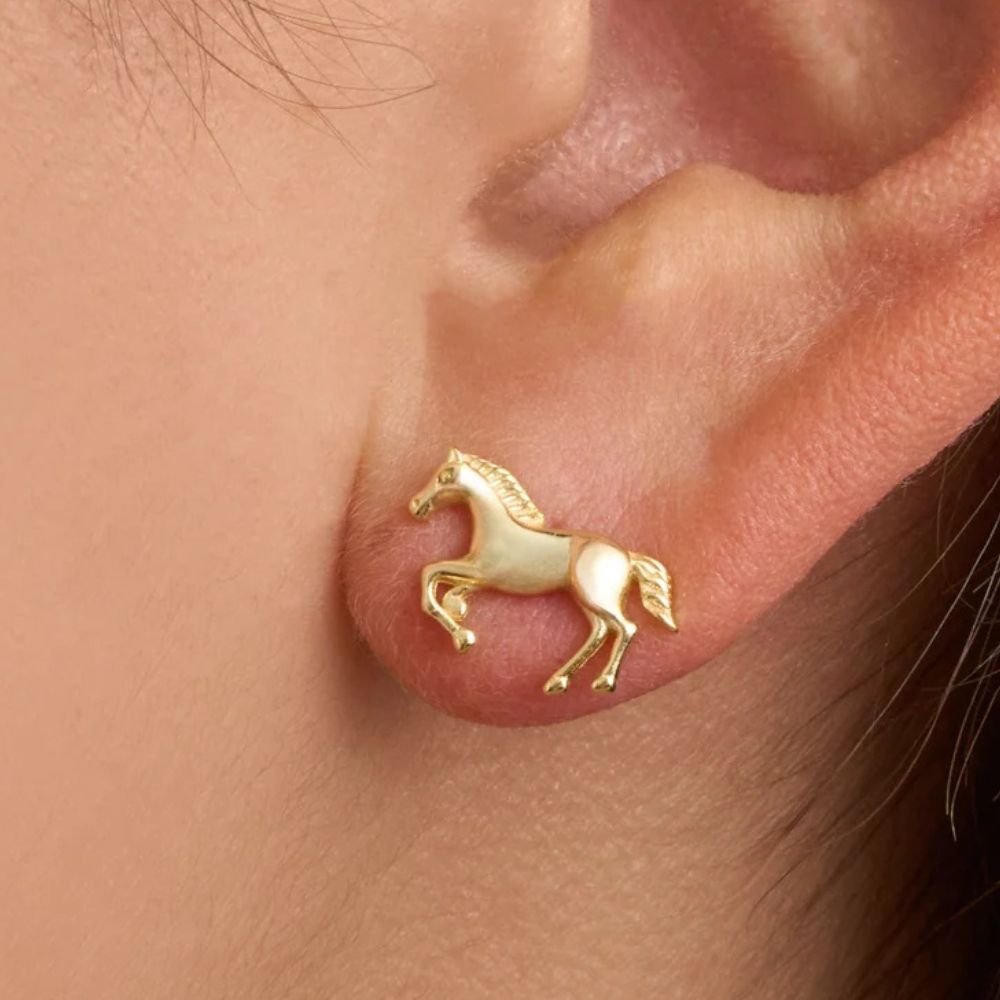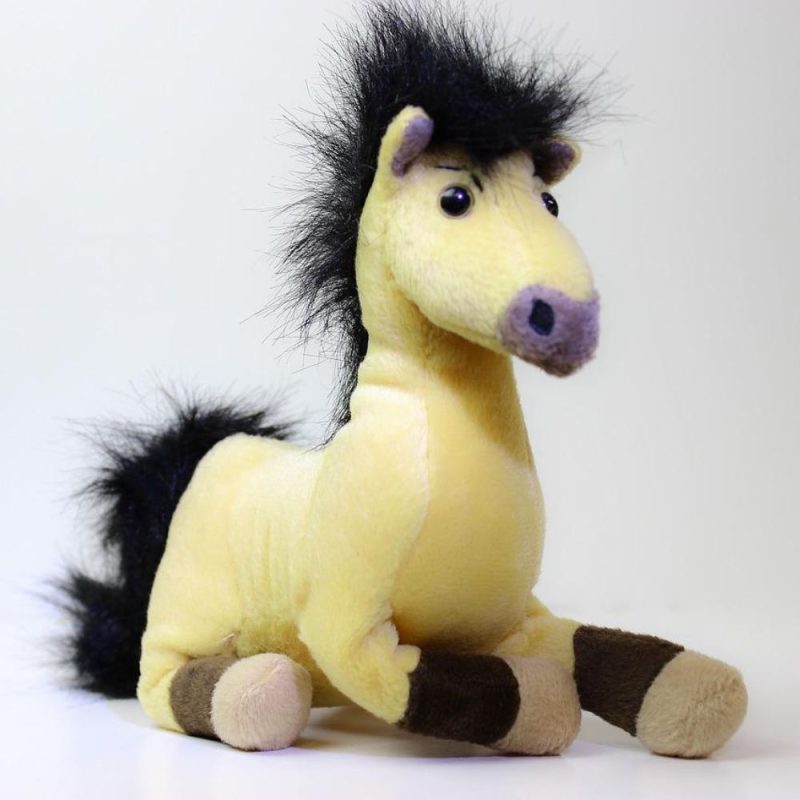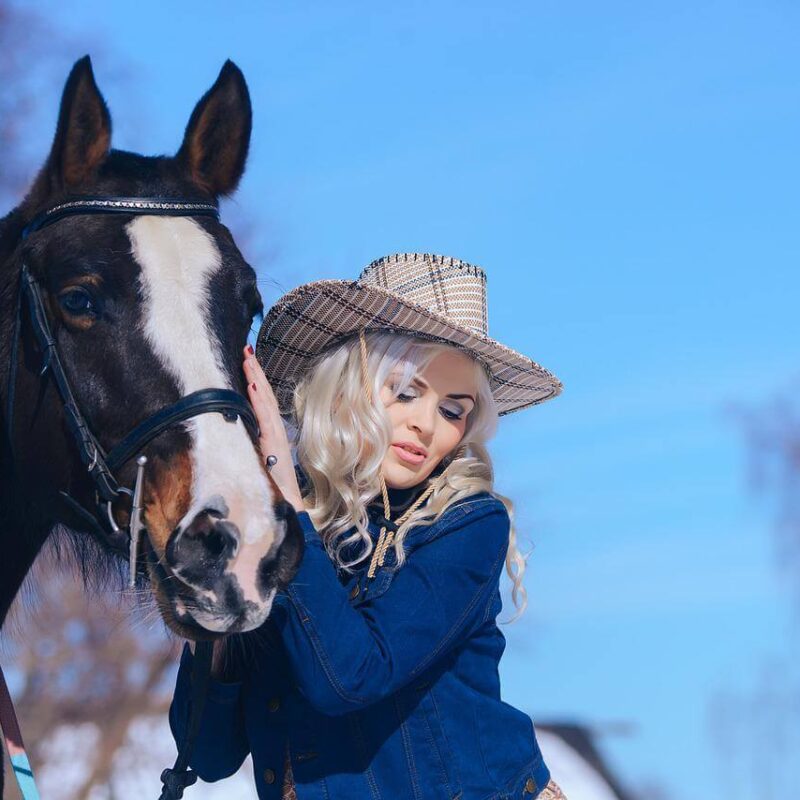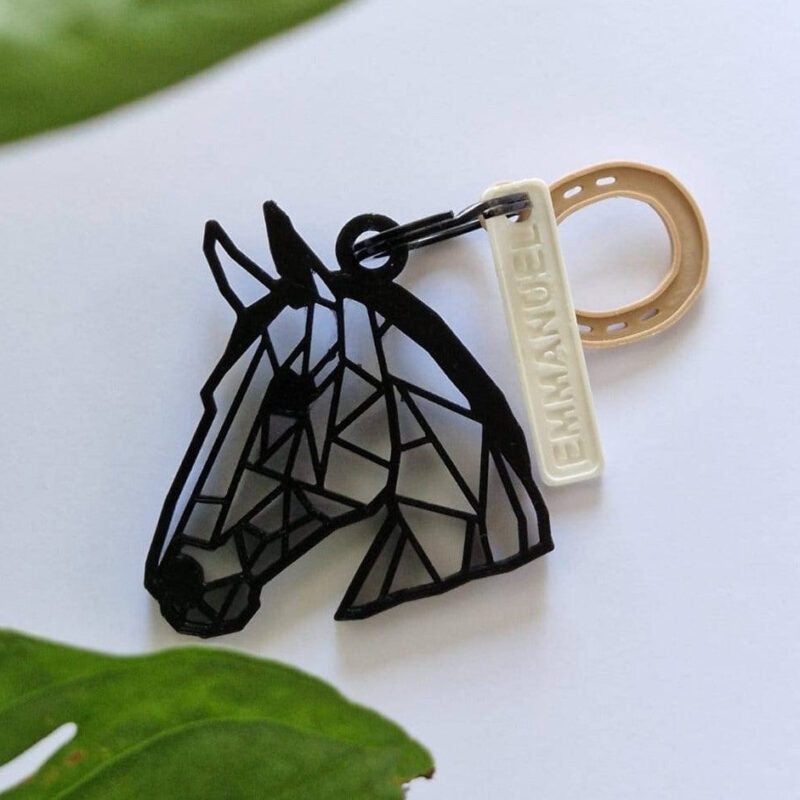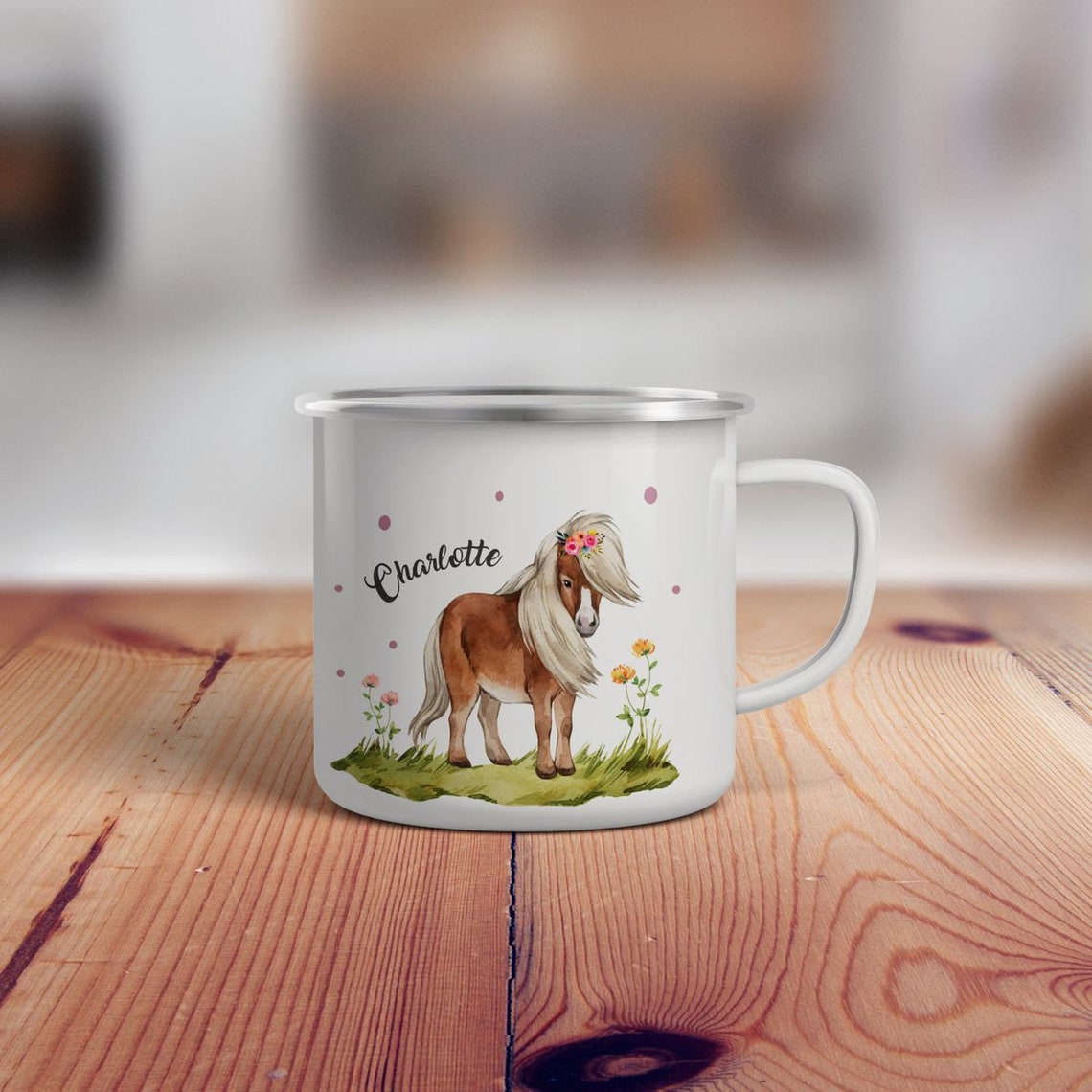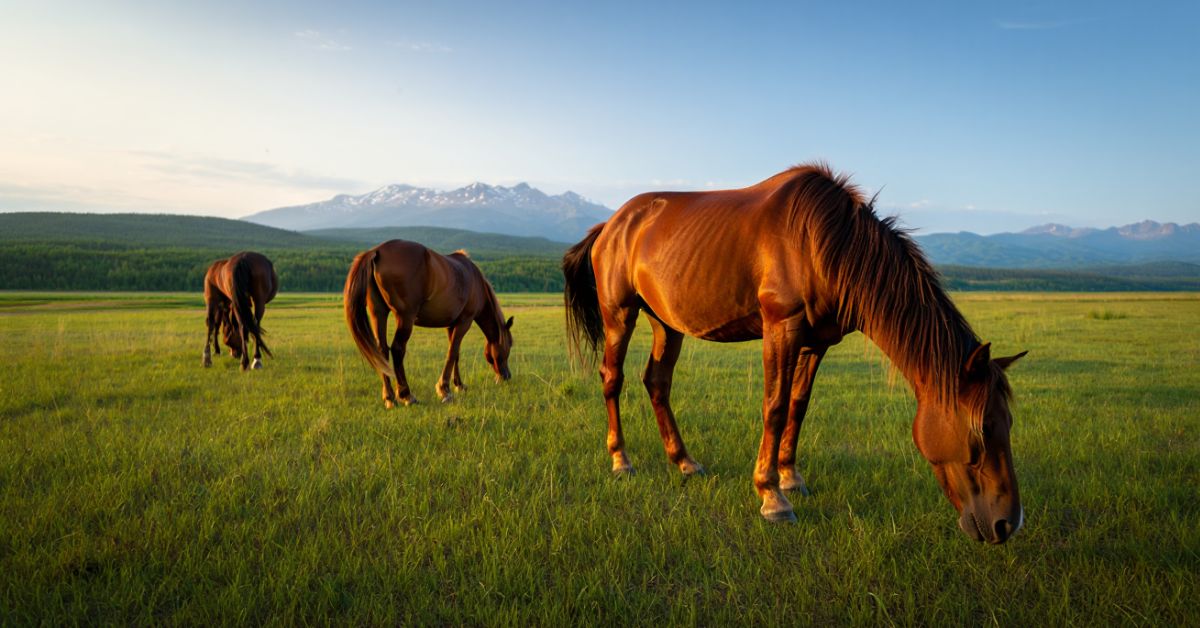
What Do Wild Horses Eat? The Ultimate Guide to Wild Horse Diet and Survival
Have you ever watched a documentary and wondered what do wild horses eat to survive in harsh environments? Unlike their domesticated cousins munching on carefully measured grain rations, wild horses are masters of finding nutrition in nature's pantry. Wild horses eat primarily grasses, forbs, and shrubs, adapting their diet based on seasonal availability and habitat. Their natural horse diet consists of up to 90% grasses in optimal conditions, supplemented by wildflowers, leaves, and bark when necessary. These magnificent creatures spend 15-20 hours daily grazing, using their incredible equine digestive system to extract nutrients from fibrous plants that would leave other animals starving. Understanding feral horse nutrition reveals nature's brilliant design—from their specialized teeth that continuously grow to compensate for wear, to their unique ability to thrive on vegetation most animals would reject.
Understanding the Natural Horse Diet: What Makes Wild Horses Unique Herbivores 🌾
The wild horse diet represents millions of years of evolutionary perfection. These free-roaming beauties aren't picky eaters—they're strategic survivors. Think of them as nature's lawnmowers with PhDs in botany!
Mustang feeding habits differ dramatically from domestic horses because they must constantly adapt to environmental changes. While your backyard pony enjoys predictable meals, wild horses face the reality of forage availability fluctuating with weather, competition, and seasons.
The equine digestive system is a marvel of biological engineering. Unlike cattle with their four-chambered stomachs, horses have a single-chambered stomach followed by a massive cecum—essentially a fermentation vat where beneficial bacteria break down tough plant fibers. This setup allows them to process the roughage for horses that wild environments provide, extracting calories and nutrients from materials that would pass through other animals virtually untouched.
Wild horse feeding behavior follows predictable patterns. Dawn and dusk are prime feeding times, with shorter grazing sessions throughout the day. This strategy helps them avoid midday heat in summer and maximizes visibility to watch for predators. A typical mustang might take 30-40 bites per minute, covering several miles daily while grazing—talk about getting your steps in!
The Science Behind Equine Forage Selection
Wild horses demonstrate sophisticated equine plant consumption strategies. They don't just eat randomly; they actively select plants based on nutritional content, palatability, and digestive ease. Research from the Bureau of Land Management in 2023 shows that mustangs preferentially select young, tender grass shoots containing higher protein levels over mature, fibrous stalks when both are available.
This selective grazing habits of wild horses serves multiple purposes:
-
Maximizing nutrition per bite (because spending 18 hours eating is already exhausting!)
-
Avoiding toxic plants through instinct and learned behavior
-
Maintaining dental health through varied textures
-
Supporting their wild horse digestive health with appropriate fiber levels
What Do Mustangs Eat Throughout the Year: Seasonal Wild Horse Diet Variations 📅
"In nature's economy, the currency is food and the tax is paid in time spent foraging." While not about horses specifically, ecologist Robert MacArthur's observation perfectly captures wild horse survival strategy.
The seasonal wild horse diet tells a story of adaptation and resilience. Let me break down what these incredible animals consume across different times of the year.
Spring: Nature's Buffet Season 🌸
Spring represents the jackpot season for feral horse nutrition. Fresh, protein-rich grasses emerge, and wildflowers (forbs) add variety and essential minerals. The dietary composition during March through May typically includes:
Grasses make up 70-80% of intake: Kentucky bluegrass, timothy, brome, and fescue species dominate when available. These provide crucial carbohydrates for energy after winter's lean times.
Forbs and grasses combination reaches peak diversity. Dandelions, clover, alfalfa growing wild, and various wildflowers add protein punch—sometimes reaching 15-20% protein content compared to grass's 8-12%. Your horse-loving heart will appreciate knowing that wild horses instinctively seek these nutrient powerhouses!
Wild horse mineral intake increases naturally as spring plants accumulate minerals from soil. Calcium, phosphorus, and trace minerals absorbed during rapid plant growth support bone health and milk production for nursing foals born in spring.
Summer: The Grazing Marathon ☀️
Summer shifts the wild horse food sources equation. As temperatures soar and plants mature, nutritional content changes dramatically. June through August challenges these animals differently.
Mature grasses dominate the grassland diet, but protein levels drop to 6-8% as plants focus energy on seed production rather than leaf growth. Wild horses compensate by:
Increasing browse behavior on tree leaves, particularly willow, cottonwood, and aspen in riparian areas. This wild horse browsing supplements declining grass nutrition.
Seeking out shrubs and bushes for horses like sagebrush (though they prefer avoiding it unless desperate), rabbitbrush, and various berry-producing shrubs. These provide different nutrient profiles and phytochemicals that support health.
Expanding territory to find weeds wild horses eat—yes, weeds! Thistles (carefully consumed to avoid spines), dock, plantain, and various "nuisance" plants humans disdain actually provide valuable nutrition. One researcher called wild horses "the original organic weed management system."
Wild horse water sources become critical. Horses can lose 10-15 gallons of water daily through sweating and respiration in hot climates. Proximity to reliable water influences feeding patterns—they'll graze farther from water in the cool morning, staying closer during afternoon heat.
Fall: Preparation Mode 🍂
September through November sees strategic equine forage consumption as horses prepare for winter. The impact of season on horse diet becomes obvious as available options narrow.
Horses focus on building fat reserves, seeking calorie-dense foods. Seed heads from grasses provide concentrated energy. Acorns and other tree seeds enter the diet where available, though horses must consume them carefully—too many cause digestive upset.
Browse versus graze ratios shift toward more browsing. Leaves changing color actually concentrate certain nutrients, making fall foliage nutritious before dropping. Wild horses strip willow branches and consume bark from aspen and cottonwood trees.
The adaptations for grazing become evident. Horses grow thicker winter coats and shift feeding patterns to conserve energy, grazing more efficiently during warmer midday hours.
Winter: Survival Mode Activated ❄️
December through February tests every aspect of the natural horse diet strategy. This is when wild horse survival food knowledge separates thriving bands from struggling ones.
Graminoids (grass family plants) dormant or snow-covered force dietary flexibility. Horses paw through snow up to 2-3 feet deep to reach frozen grass beneath—a behavior called "cratering." A 2024 study in Montana documented mustangs cratering through 40 inches of snow to access dried grasses, spending up to 22 hours daily just obtaining enough food to survive.
Winter dietary composition can include surprising items:
Bark consumption increases dramatically. Those continuously-growing teeth handle woody material that would break human teeth instantly. Bark provides minimal nutrition but crucial fiber and some calories when nothing else exists.
Dried forbs and grasses from previous seasons, though lower in nutrients, provide the roughage their digestive systems need to function. Think of it as nature's hay—preserved by cold, waiting for desperate times.
Wild horse feeding behavior becomes a masterclass in efficiency. They reduce movement to conserve energy, select south-facing slopes where snow melts faster, and group together to share body heat while foraging less productively.
Desert Wild Horse Diet vs Forest Wild Horse Diet: Regional Adaptations 🏜️🌲
"The desert is a horse's proving ground; only the truly adapted survive." - Modern wildlife ecologist Dr. Sarah Martinez, 2023
Geography dramatically influences what do wild horses eat. Let's compare two extreme environments.
Desert Wild Horse Diet: Masters of the Arid
The desert wild horse diet showcases incredible adaptation. Think Nevada's mustangs or Arizona's Salt River wild horses navigating landscapes receiving under 10 inches of annual rainfall.
These horses have evolved remarkable feral equine eating habits:
They consume drought-resistant grasses like Indian ricegrass, galleta, and three-awn species. These graminoids have deep root systems accessing underground moisture and contain compounds preventing excessive water loss.
Shrubs and bushes for horses become primary food sources. Saltbush, shadscale, and various cacti (yes, carefully avoiding spines!) provide both nutrition and moisture. Some desert mustangs derive 30-40% of their water needs from succulent plants during extreme drought.
Wild horse browsing focuses on desert vegetation like mesquite pods (high protein!), palo verde, and creosote bush (only when desperate—it's their least favorite). During spring, when brief rains trigger wildflower blooms, these horses gorge on nutrient-rich forbs storing energy for leaner times.
Wild horse water sources require daily access, though desert-adapted horses can tolerate 48 hours without water if consuming moisture-rich plants. They've been documented traveling 15-20 miles daily between food and water sources, showcasing their incredible endurance.
Calculate the energy equation: A 900-pound desert mustang needs approximately 15-20 pounds of dry matter daily. In lush spring, that might require 4-5 hours of grazing. During summer drought with poor-quality forage? Try 18-20 hours of near-constant foraging just to meet minimum requirements!
Forest Wild Horse Diet: Woodland Plenty
The forest wild horse diet offers different challenges and opportunities. Consider Oregon's Kiger mustangs or Canadian wild horses in forested regions.
Forest horses enjoy greater forage availability but face different obstacles. Dense tree canopy limits grass growth, shifting their diet toward:
Understory grasses and forbs: Shade-tolerant species like woodland brome, deer grass, and various sedges. These have adapted to limited sunlight and often provide steady nutrition year-round compared to boom-bust desert cycles.
Tree species diversity matters. Mustang feeding habits in forests include consuming:
-
Young leaves from deciduous trees (especially nutritious in spring)
-
Berries, fruits, and nuts when available
-
Tree bark during winter (aspen is a favorite—apparently it's the ice cream of tree bark!)
-
Mushrooms occasionally (horses seem to know which are safe)
Wild horse feeding behavior in forests involves more vertical browsing. They rear on hind legs to reach higher branches, strip lower tree leaves, and navigate dense vegetation urban horses never encounter.
Interestingly, forest horses often have better body condition scores in winter than desert counterparts. Why? Snow insulation creates a microclimate protecting dormant vegetation, and conifer forests block winds, reducing caloric needs for thermoregulation.
Nutritional Needs of Wild Horses: Breaking Down the Biology 🔬
Understanding nutritional needs of wild horses requires examining their unique biology. These aren't your grandmother's carriage horses—they're finely-tuned survival machines!
The Equine Digestive System: A Fiber-Processing Powerhouse
The equine digestive system deserves its own fan club. Here's why it's so special for processing that herbivore diet:
Mouth and teeth: Those huge teeth aren't just for smiling in Instagram photos! Horses have 40-44 teeth designed for grinding fibrous material. Wild horse dental wear occurs constantly—they literally grind away tooth surface while eating, which is why equine teeth continue growing throughout life (up to age 20-25). A wild horse might wear away 2-4mm of tooth surface annually. Without this continual growth, they'd be toothless by age ten!
Small intestine efficiency: The front end digests simple sugars, proteins, and fats quickly. Wild horses extract maximum nutrition before material moves to the fermentation chambers.
Cecum and large colon: This is where magic happens! Billions of bacteria, protozoa, and fungi break down cellulose and hemicellulose—the tough structural components of plants that make up roughage for horses. This fermentation produces volatile fatty acids horses absorb for energy. Essentially, bacteria eat the fiber and horses harvest the bacterial byproducts. Symbiosis at its finest!
This system means wild horse digestive health depends on consistent fiber intake. Unlike humans who can skip meals, horses need near-constant food flowing through their system to maintain healthy gut bacteria populations and prevent colic.
Calculating Wild Horse Nutritional Requirements
Let's crunch some numbers that make feral horse nutrition fascinating:
Daily dry matter intake: A 1,000-pound wild horse typically consumes 2-2.5% of body weight daily in dry matter = 20-25 pounds of dried plant material. When eating fresh grass (75% water), that's 80-100 pounds of actual grass consumed daily!
Protein requirements: Maintenance adults need 8-10% crude protein in their total diet. Lactating mares might require 12-14%, while growing foals need 14-16%. Wild horses meet these needs through selective grazing, targeting protein-rich forbs during critical life stages.
Energy (calories): A wild horse at maintenance needs about 16-20 Mcal (megacalories) of digestible energy daily, increasing to 25-30 Mcal for lactating mares or horses in cold climates. They obtain this from the volatile fatty acids produced during fiber fermentation plus any starches and sugars from young plants.
Mineral requirements: The wild horse mineral intake puzzle fascinates researchers. Horses need:
-
Calcium and phosphorus in roughly 2:1 ratio (bone health, muscle function)
-
Salt (sodium and chloride) for nerve transmission and hydration
-
Trace minerals like copper, zinc, selenium, and manganese
Wild horses often seek mineral-rich areas—salt licks, clay banks, and certain plant species that accumulate minerals. They've been observed traveling miles to access mineralized soil or water sources.
Przewalski's Horse Diet: Learning from the Last True Wild Horse
The Przewalski's horse diet offers unique insights because these horses were never domesticated. Native to Mongolian steppes, Przewalski's horses (recently reintroduced after near-extinction) provide a living laboratory for studying free-roaming horse diet evolution.
These stocky, dun-colored horses consume similar foods to other wild horses but show some distinctive patterns:
Research from 2022 monitoring programs revealed Przewalski's horses spend up to 60% of daylight hours engaged in horse grazing behavior, focusing almost exclusively on grasses and avoiding shrubs unless absolutely necessary. They're pickier than American mustangs, reflecting their evolution in relatively grass-rich steppe environments.
Their natural horse diet includes over 150 different plant species throughout the year, though 10-15 grass species comprise 80% of intake. This selective grazing influences vegetation composition across their range—areas protected from their grazing actually lose plant diversity!
Frequently Asked Questions on Wild Horse Diet and Feeding Habits
What is the primary food source for wild horses?
Grasses form the foundation of the wild horse diet, typically comprising 70-90% of total intake depending on availability. Wild horses are classified as "grazers" rather than "browsers," meaning they preferentially select grass species over woody vegetation. The equine forage selection process prioritizes young, tender grass shoots when available, but horses can subsist on mature, dried grasses during winter or drought. Different grass varieties provide varying nutrition—cool-season grasses like bluegrass and fescue versus warm-season grasses like buffalo grass and grama grass—but all serve as essential wild horse food sources.
How much do wild horses eat per day?
A typical adult wild horse consumes 20-25 pounds of dry plant matter daily, which translates to 50-100 pounds of fresh vegetation depending on moisture content. This represents about 2-2.5% of their body weight. To put this in perspective, a 900-pound mustang eating fresh spring grass (containing 75% water) would consume approximately 80-100 pounds of grass daily! Grazing habits of wild horses require 15-20 hours daily to obtain this quantity, broken into multiple grazing sessions. Lactating mares and horses in extremely cold climates may increase intake by 20-50% to meet elevated energy demands.
Do wild horses eat anything besides grass?
Absolutely! While grasses dominate, feral horse nutrition includes diverse plant materials. Forbs and grasses grow together in natural ecosystems, and horses eagerly consume wildflowers, clovers, dandelions, and various broad-leaved plants that often provide higher protein levels than grasses. Wild horse browsing behavior includes eating leaves, twigs, and bark from trees and shrubs—particularly during winter when grass is scarce. Some populations consume surprising items like cacti (in deserts), seaweed (coastal horses), and mushrooms. This dietary diversity showcases the adaptations for grazing that allow horses to survive in varied habitats. The browse versus graze ratio shifts seasonally and by habitat, but most wild horses remain primarily grazers when possible.
How do wild horses find water in harsh environments?
Wild horse water sources are critical to survival, and horses have developed remarkable strategies for locating and accessing water. Adult horses typically need 5-10 gallons daily, increasing to 15+ gallons in hot weather. Wild horses can detect water sources from miles away, likely using a combination of memory, landscape reading (vegetation changes, topography indicating drainage), and possibly scent. In deserts, they dig wells—shallow holes scraped into dry creek beds to access groundwater—benefiting other wildlife species too! Some desert wild horse diet strategies include consuming moisture-rich plants like cacti and succulent shrubs, reducing water needs by 20-30%. Interestingly, horses can survive 48-72 hours without water if necessary, though this causes stress and reduced foraging efficiency.
What plants are toxic to wild horses?
While the natural horse diet has evolved to avoid most toxic plants, wild horses do occasionally suffer poisoning. However, they possess remarkably keen instincts about plant safety. Common toxic plants in horse habitat include locoweed (causes neurological damage), ragwort (liver toxicity), yew (extremely toxic—small amounts fatal), and various nightshades. Horses typically avoid these through:
-
Innate taste aversion to alkaloids and other toxic compounds
-
Learning from herd members (foals watch mothers and avoid plants she avoids)
-
Only consuming toxic plants when desperately hungry and no alternatives exist
Interestingly, wild horse digestive health tolerates some plant toxins better than domestic horses because gradual exposure allows gut bacteria to develop detoxification mechanisms. Still, mass die-offs occasionally occur when horses are forced onto overgrazed ranges with limited options and high concentrations of toxic species.
How does the wild horse diet differ from domestic horse feeding?
The wild horse diet versus domestic feeding represents dramatically different nutritional strategies. Domestic horses typically receive concentrated feeds (grains), high-quality hay, and supplements—often consuming 40-60% of calories from starches and sugars rather than fiber fermentation. This "hot" diet provides quick energy but can cause metabolic issues.
Wild horses eat continuously throughout the day (15-20 hours), while domestic horses often receive 2-3 meals daily with long gaps between. The constant fiber intake in wild horses maintains stable gut pH and healthy bacterial populations, preventing many digestive disorders common in domestic horses.
Nutritional needs of wild horses are met through dietary diversity—hundreds of plant species annually—whereas domestic horses might eat only 2-5 feedstuffs. This diversity provides micronutrients, phytochemicals, and beneficial compounds that supplements struggle to replicate.
The exercise component matters too. Free-roaming horse diet acquisition requires walking 5-15 miles daily, maintaining fitness that domestic horses achieve only through deliberate exercise programs. This movement aids digestion, hoof health, and overall wellbeing in ways stall confinement cannot match.
Celebrate Your Love for Wild Horses! 🐴💝
Does understanding the incredible wild horse survival strategy make you appreciate these magnificent creatures even more? At Dream Horse, we share your passion! Our collection of gifts for horse lovers lets you express that connection every single day.
Express your style with our equestrian jewelry featuring wild horse designs—necklaces and bracelets that capture the free spirit of mustangs grazing across endless grasslands. Each piece tells the story of equine beauty and resilience.
Transform your space with our equestrian decoration collection. Imagine wild horse sculptures gracing your bookshelf or stunning posters depicting mustangs in their natural habitat adorning your walls. These aren't just decorations—they're daily reminders of the powerful bond between humans and horses.
Whether you're a rider appreciating your horse's evolutionary heritage or simply captivated by wild horse beauty, our carefully curated gifts for horse lovers help you assert your individuality. Because loving horses isn't just a hobby—it's a lifestyle, a passion, an identity.
Visit Dream Horse today and discover how our products let you carry that wild horse spirit with you wherever you go! 🌟




